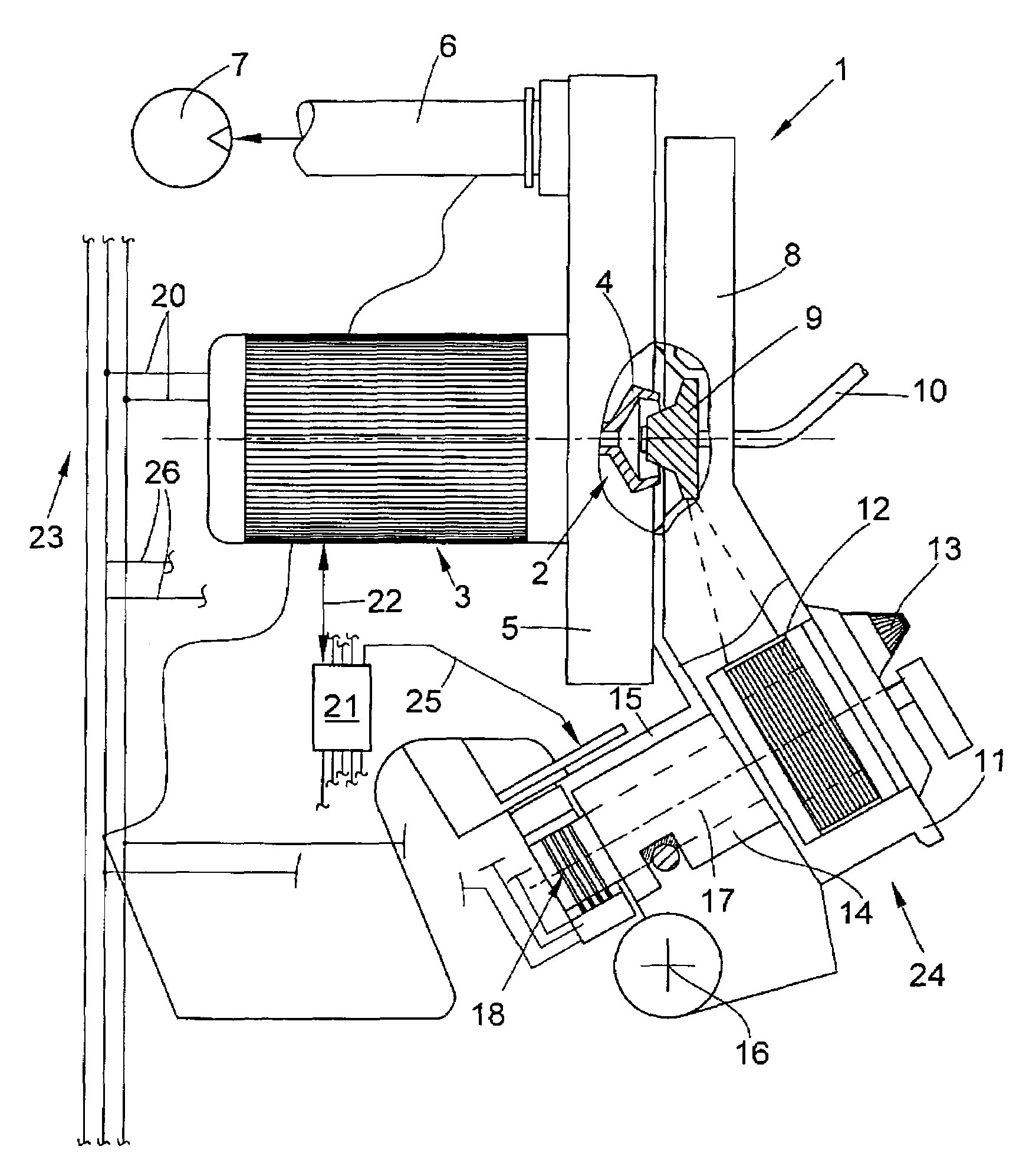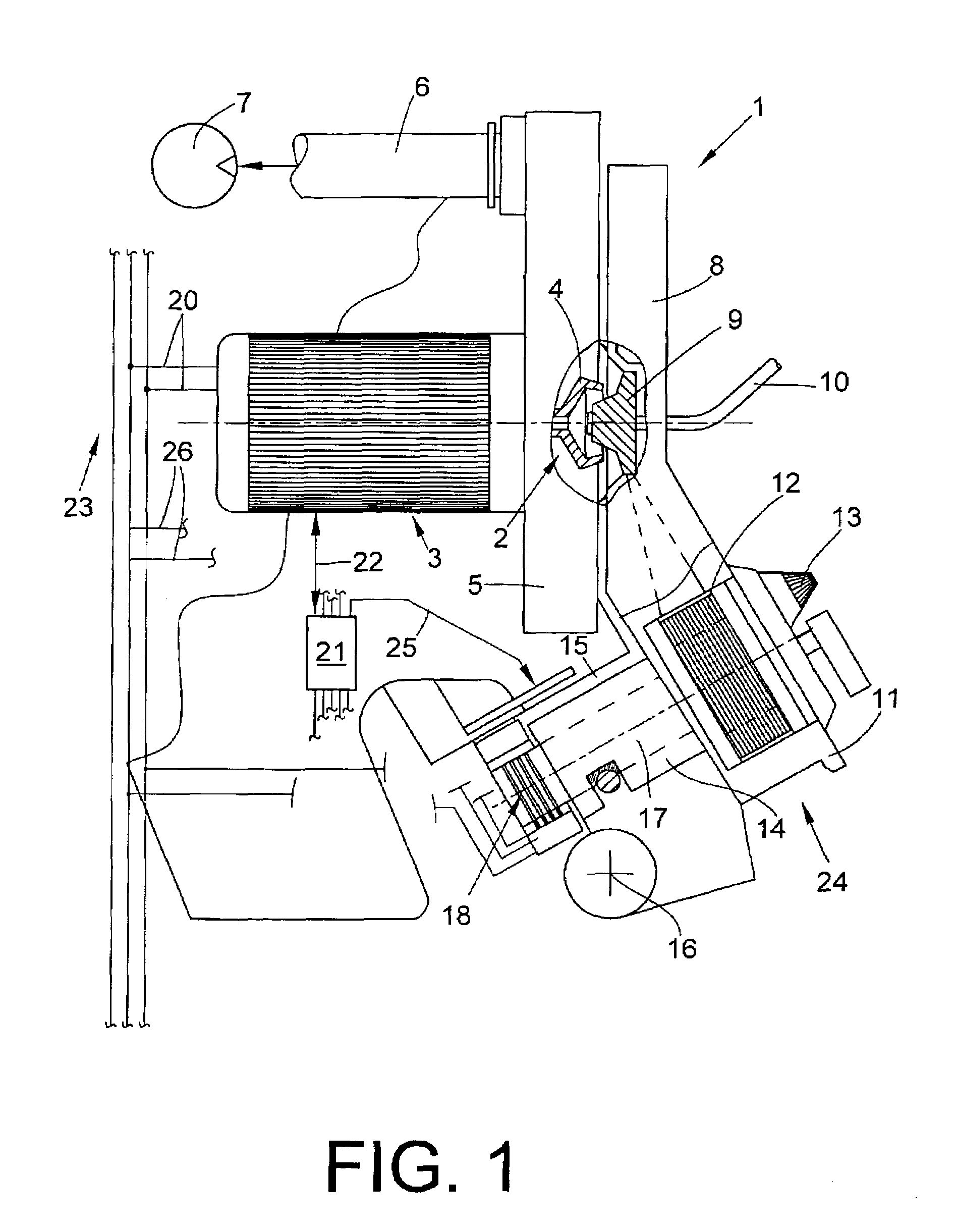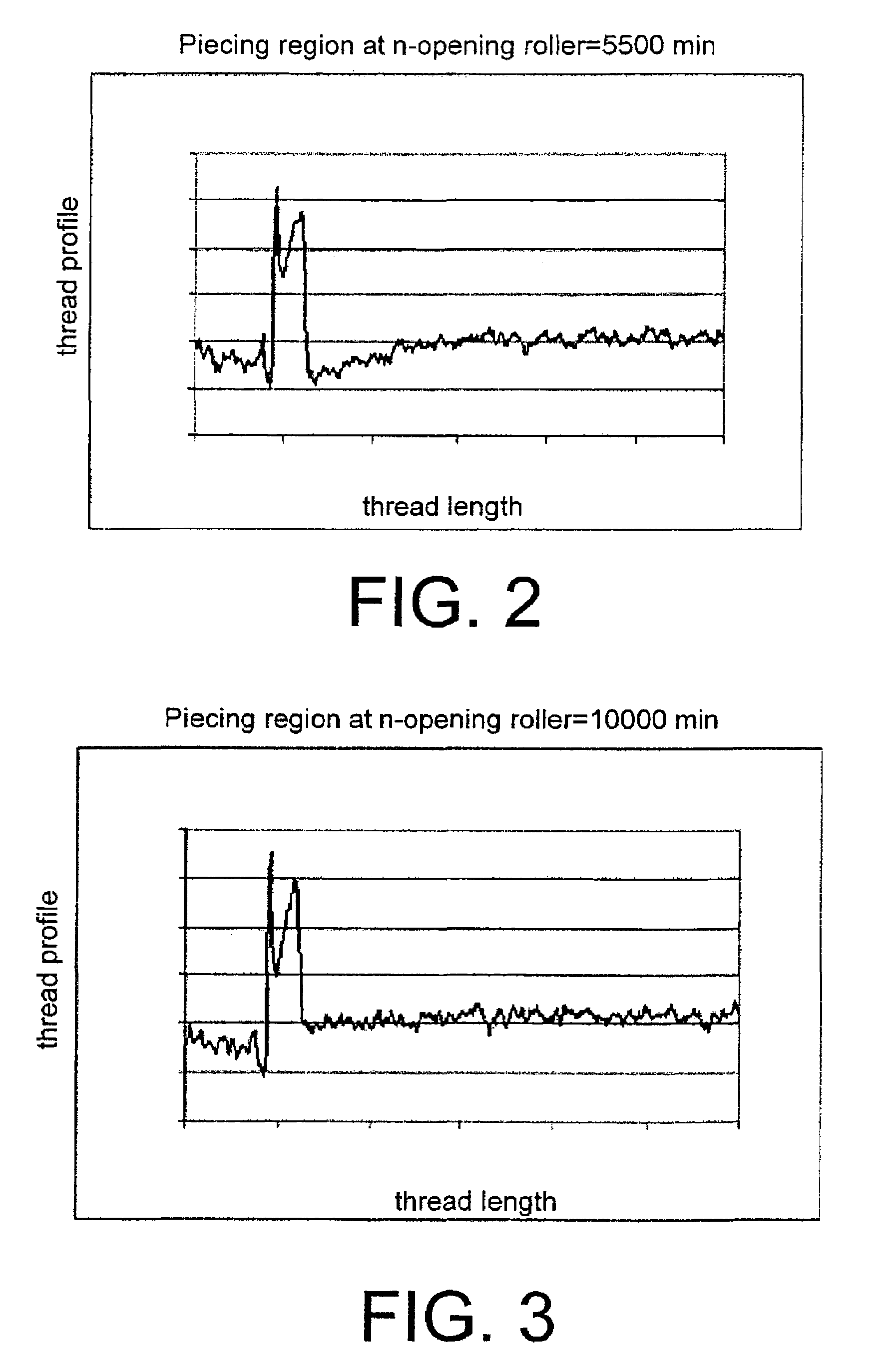Method for operating an open-end spinning device
a spinning device and open-end technology, applied in the direction of open-end spinning machines, yarn, textiles and papermaking, etc., can solve the problems of fiber flow reacting with a delay in increasing the drawing speed, thread becoming too thin, etc., and achieve the effect of improving the uniformity of yarn during the spinning process
- Summary
- Abstract
- Description
- Claims
- Application Information
AI Technical Summary
Benefits of technology
Problems solved by technology
Method used
Image
Examples
Embodiment Construction
[0020]The view in FIG. 1 shows an open end spinning device 1 of an open end rotor spinning machine, which is arranged in the region of the spinning stations of textile machines of this type. Open end spinning devices 1 of this type are known in principle and described in relative detail, for example, in German Patent Publication DE 196 50 597 A1.
[0021]The open end spinning device 1 comprises a spinning rotor 2 with a rotor cup 4, which revolves during spinning operation at a high speed in a spinning rotor housing 5 which is acted on by a reduced pressure. The rotor housing 5, which is closed at the front by a cover element 8 during spinning operation, is connected for this purpose via a pneumatic line 6 to a reduced pressure source 7, which provides the reduced pressure in the rotor housing 5 necessary for spinning.
[0022]The spinning rotor 2 can be driven in a defined manner by a controllable electric motor single drive 3, which is connected via electric lines 20 to the energy suppl...
PUM
| Property | Measurement | Unit |
|---|---|---|
| speed | aaaaa | aaaaa |
| piecing speed | aaaaa | aaaaa |
| operating speed | aaaaa | aaaaa |
Abstract
Description
Claims
Application Information
 Login to View More
Login to View More - R&D
- Intellectual Property
- Life Sciences
- Materials
- Tech Scout
- Unparalleled Data Quality
- Higher Quality Content
- 60% Fewer Hallucinations
Browse by: Latest US Patents, China's latest patents, Technical Efficacy Thesaurus, Application Domain, Technology Topic, Popular Technical Reports.
© 2025 PatSnap. All rights reserved.Legal|Privacy policy|Modern Slavery Act Transparency Statement|Sitemap|About US| Contact US: help@patsnap.com



